The facilities are carefully engineered and constructed for optimal metalworking and efficiency. Read More…
With over 50 years in cast iron metalworking, you can trust Mesa Castings’ expertise in grey iron, white iron, nickel-chromium alloyed & high chromium alloyed castings. The finest ductile and abrasion resistant iron castings individually engineered using the latest technology, exceeding ASTM, ASME & SAE. We combine over 100 years of experience with the finest materials to produce high quality.

In need of alloy castings, carbon steel castings, ductile iron castings or gray iron castings? We invite you to use our ISO 9001:2000-certified company. Thus far, we have produced product for many industries: agricultural; bridge and crane; drilling and mining; fittings; glass; tool and die; tire; valves.

American Iron & Alloys Corporation is a leading manufacturer of gray iron castings and ductile iron castings. Our Versa-Bar brand of castings comes in various sizes and shapes and can be custom cast. We provide a wide variety of industries with quality cost-efficient castings.

Impro Industries is globally recognized as a leading provider of high-precision, high-complexity, and mission-critical casting and machined components. Industries served include automotive, aerospace, medical, and many mor. Our team is dedicated to the quality of our every project, ensuring the highest customer satisfaction. Contact us today to learn more about our grey iron casting capabilities.

More Iron Foundry Companies
To accomplish the iron casting process, foundries posses the equipment and supplies required to analyze and mix raw materials before heating them to extreme temperatures in order to liquefy them. The molten cast iron is then poured into molds that may be manufactured at the foundry or produced elsewhere depending on the capabilities of a specific facility.
Once filled the mold and material it houses must be cooled to solidify the part. While some iron foundries allow the casts to cool at room temperature, other operations require advanced cooling technology. These factories often require a great deal of both floor and storage space to house equipment, finished parts and pre-production materials.
While some process several metals rather than just iron, it is often beneficial to have a specialty in order to stay relevant within the highly competitive field of metallurgy. Iron foundries draw business from such versatile industries as automotive, agriculture, water and sewage treatment, irrigation, ventilation, hydraulics, manufacturing, machinery building, electronics, transportation, construction and building.
The processes undertaken at an iron foundry begin with a selection of materials. The proper elemental and chemical composition is produced during the melting stage of casting. A specialized blast furnace known as a cupola is used to achieve the temperatures necessary to melt iron and additives such as scrap steel and iron. The high heat also refines the melt which is then poured into a mold by hand or automatically.
Any number of casts can be made and housed at a given foundry for continuous or one time use. These molds are solid or split pattern, meaning composed of one or two pieces. The latter have a top portion known as a cope and a lower section called a drag. Molds may also have core processes for the creation of parts and products with cavities or reentrant angles. Pouring may be use gravity, a vacuum or pressurized gas to completely fill the mold which is then allowed to cool.
Cooling is carefully controlled to encourage the development of the internal microstructure of a cast part or component. A fully cooled cast iron piece is then ejected from the mold. As casting often leaves burrs or other artifacts, most foundries offer surface cleaning and finishing processes such as grinding, sanding and machining.
Secondary operations such as painting, galvanizing, heat treating and assembly may also be available at an iron foundry. The capabilities of a specific facility should be considered with regards for production needs.





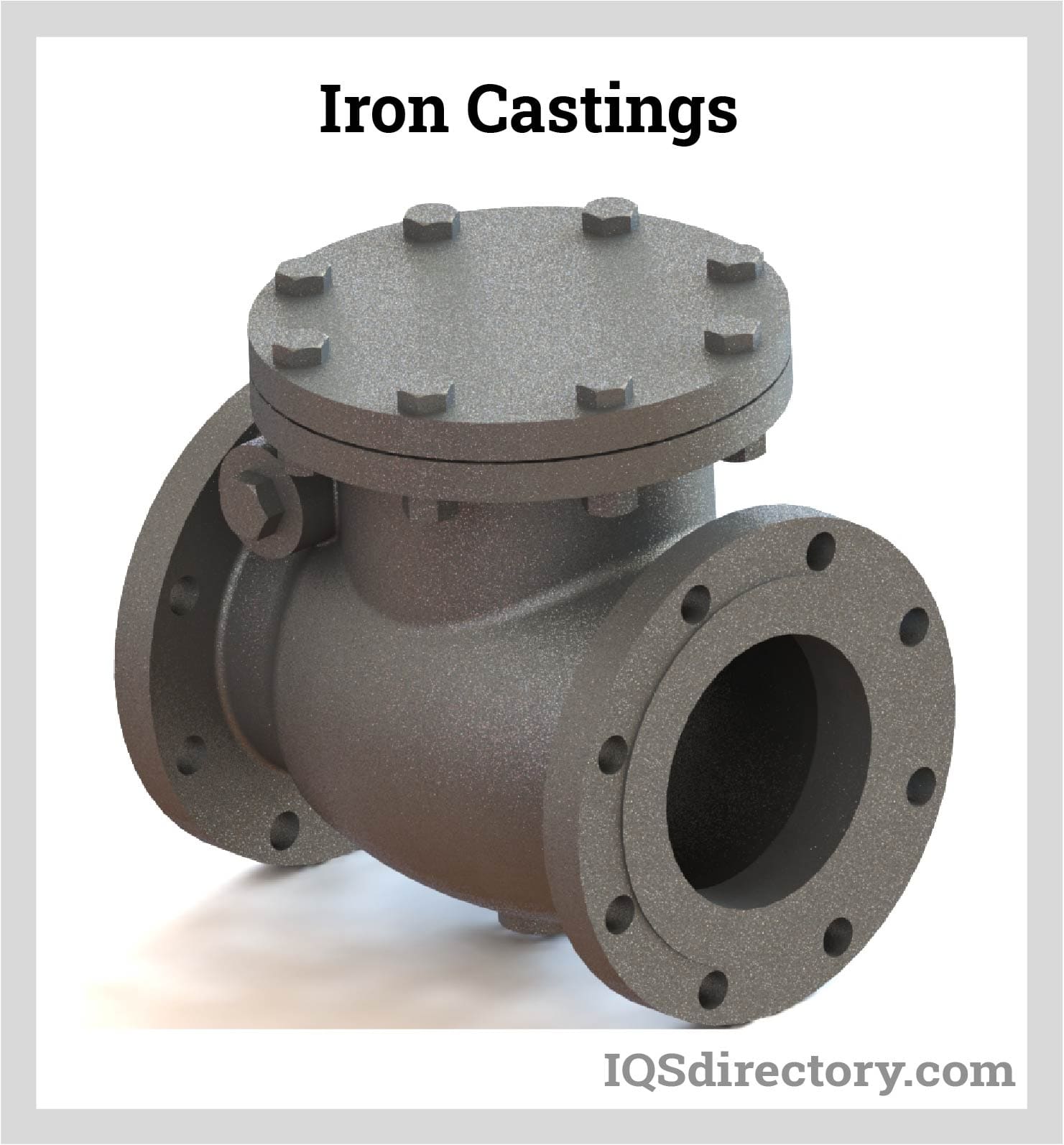
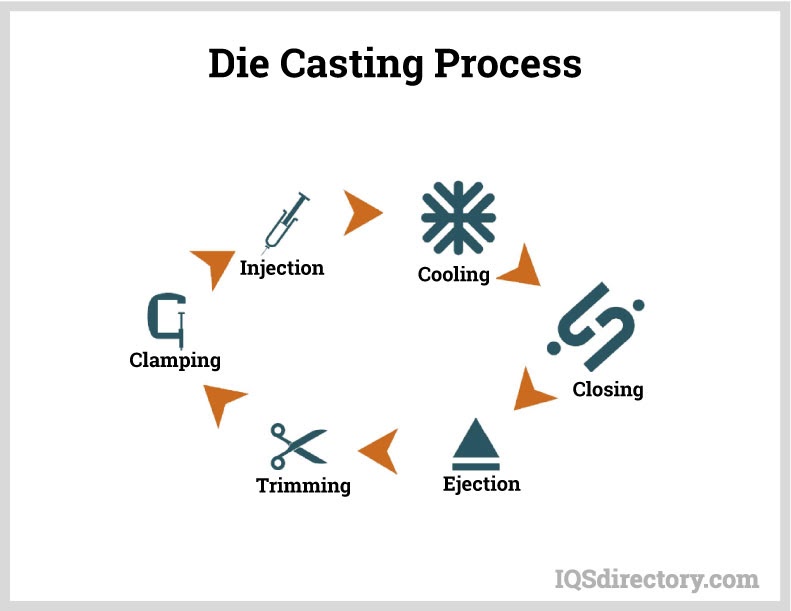
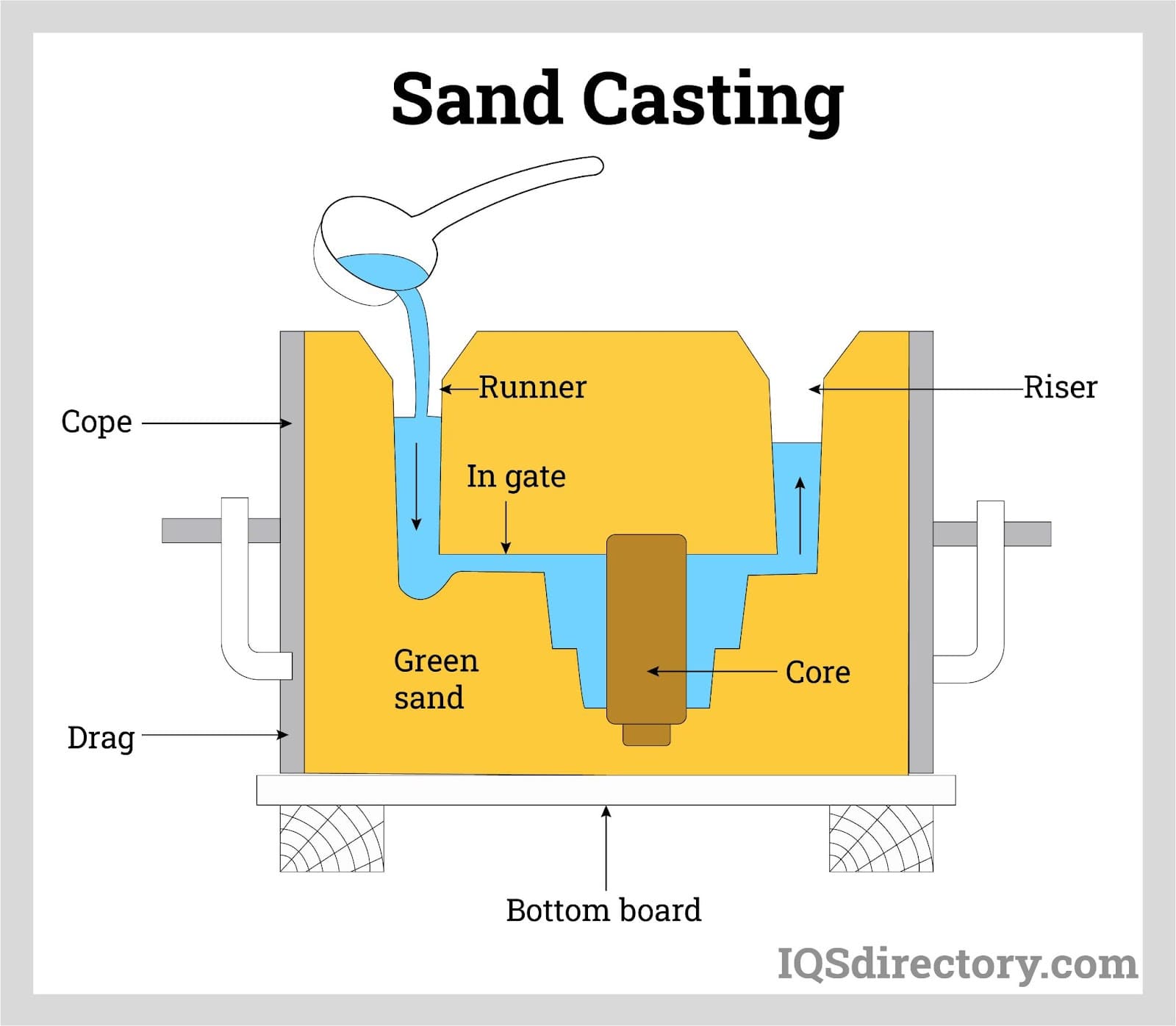
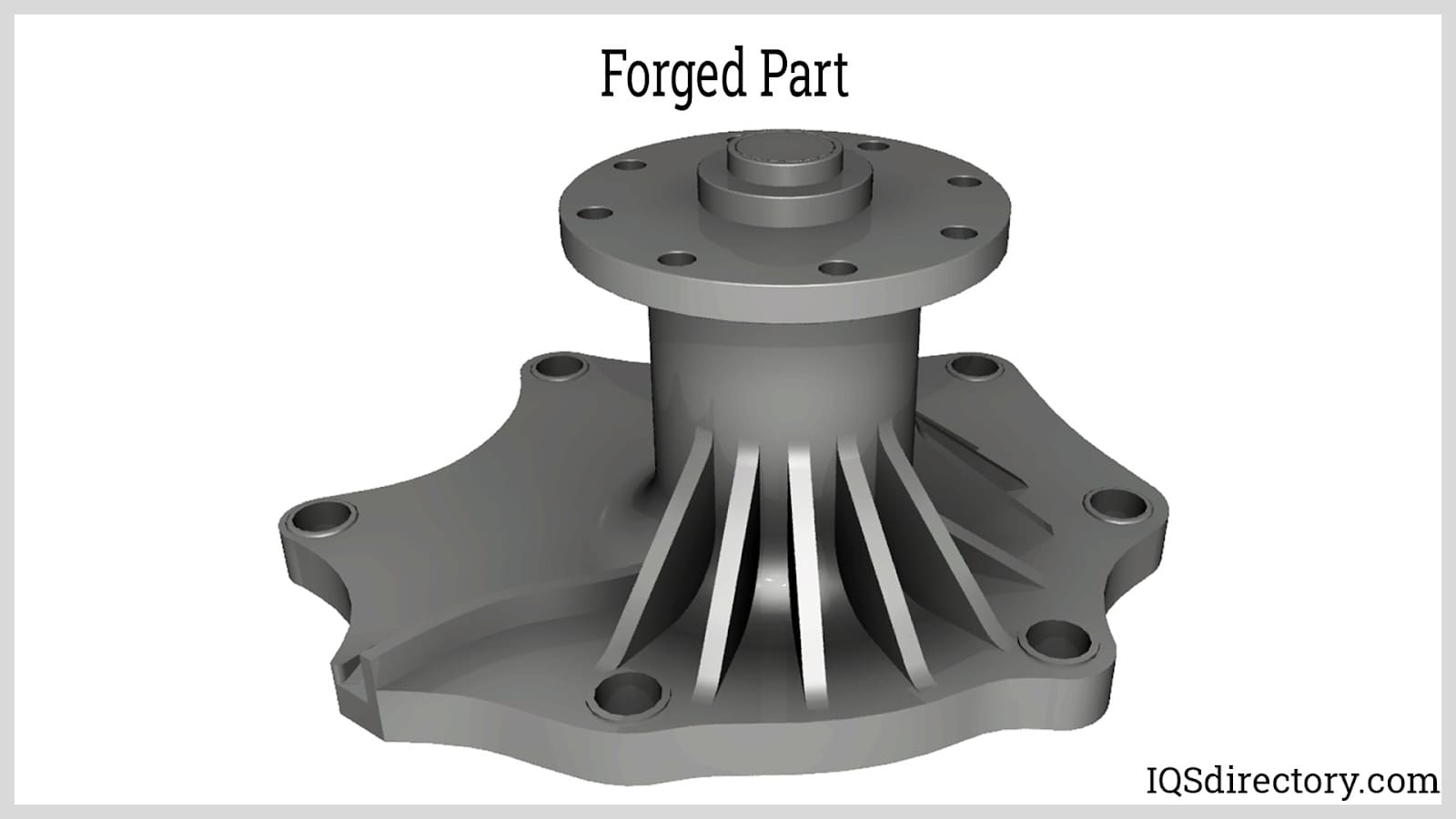
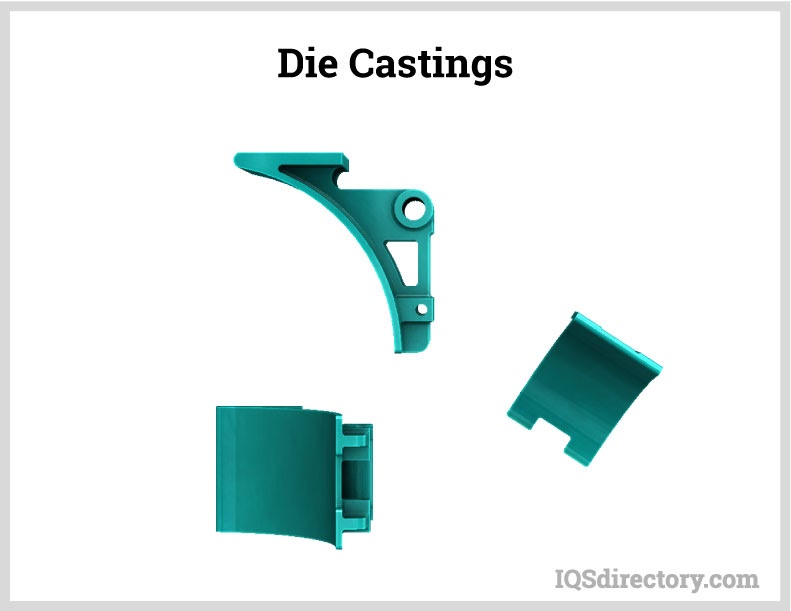
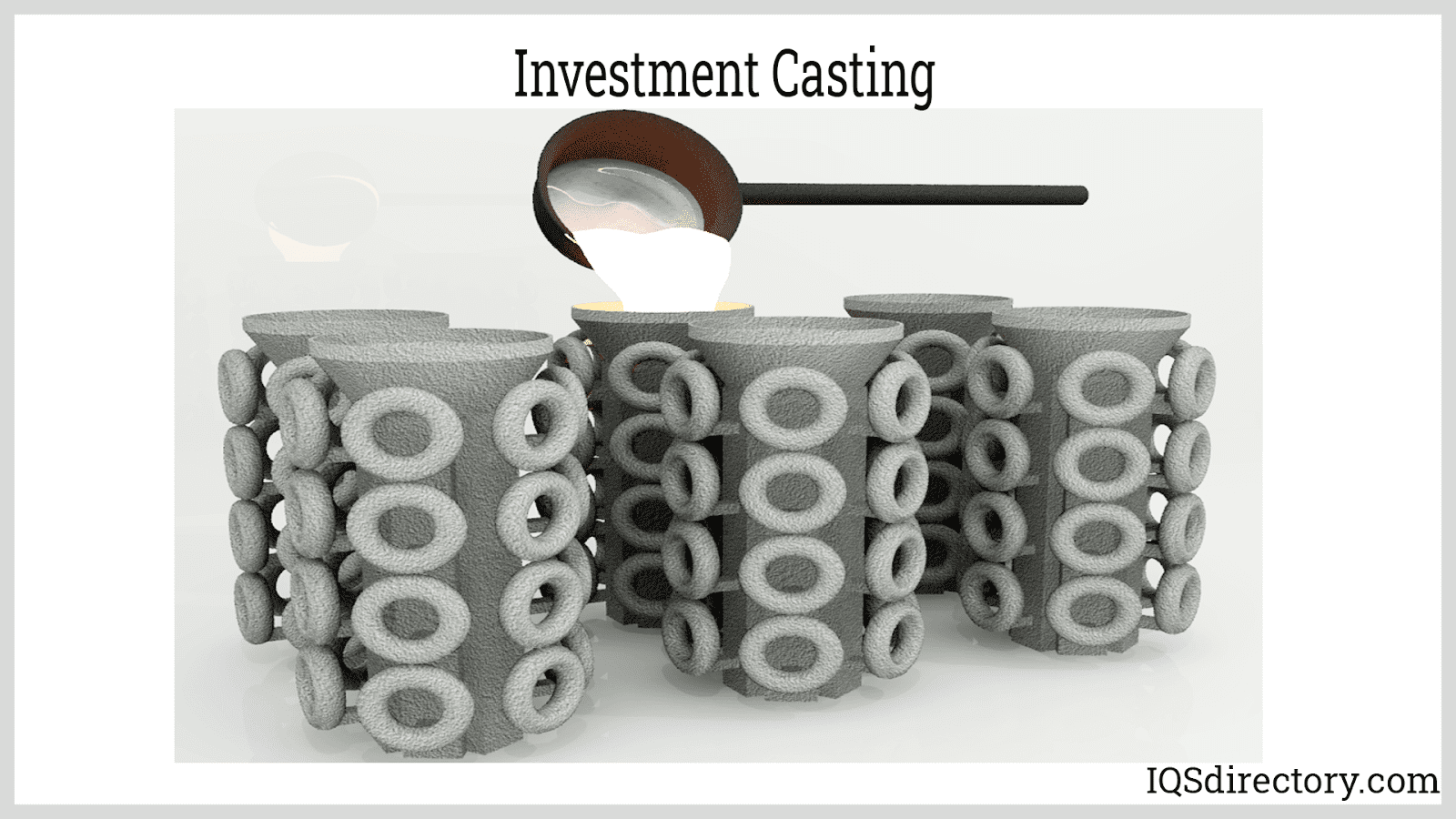
 Die Castings
Die Castings Forgings
Forgings Grey Iron Castings
Grey Iron Castings Investment Castings
Investment Castings Castings & Forgings
Castings & Forgings Bulk Material Handling
Bulk Material Handling Electrical & Electronic Components
Electrical & Electronic Components Flow Instrumentation
Flow Instrumentation Hardware
Hardware Material Handling Equipment
Material Handling Equipment Metal Cutting Services
Metal Cutting Services Metal Forming Services
Metal Forming Services Metal Suppliers
Metal Suppliers Motion Control Products
Motion Control Products Plant & Facility Equipment
Plant & Facility Equipment Plant & Facility Supplies
Plant & Facility Supplies Plastic Molding Processes
Plastic Molding Processes Pumps & Valves
Pumps & Valves Recycling Equipment
Recycling Equipment Rubber Products & Services
Rubber Products & Services